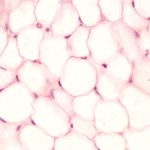Hindsight: Retinol-Binding Protein 4 in Adipose Tissue
Saturday, November 17, 2012 With good access to both adipose tissue biopsies and primary cultured human adipocytes, in the early 2000s, my lab in Berlin continued to conduct a number of exploratory studies on protein expression in human fat tissue.
With good access to both adipose tissue biopsies and primary cultured human adipocytes, in the early 2000s, my lab in Berlin continued to conduct a number of exploratory studies on protein expression in human fat tissue.
In 2006, we published a paper in Diabetes, in which we reported the expression of retinol-binding protein 4 in human adipose tissue and showed that it behaved differently than in rodents.
Previous studies in mice had suggested that adipocytes serve as glucose sensors and regulate systemic glucose metabolism through release of serum retinol-binding protein 4 (RBP4).
We did find that RBP4 was highly expressed in isolated mature human adipocytes and secreted by differentiating human adipocytes, however, in contrast to the animal data, RBP4 mRNA was downregulated in subcutaneous adipose tissue of obese women, and circulating RBP4 concentrations were similar in 74 normal weight, overweight, and obese women.
We also found that RBP4 was positively correlated with GLUT4 expression in adipose tissue, independent of any obesity-associated variable.
Five percent weight loss slightly decreased adipose RBP4 expression but did not influence circulating RBP4.
In another set of experiments, we stratified 14 volunteers by low or high basal fasting interstitial glucose concentrations, as determined by in-vivo microdialysis technique. Venous glucose concentrations were similar throughout oral glucose tolerance testing, and basal RBP4 expression in adipose tissue and serum RBP4 concentrations were similar in the groups with higher and lower interstitial glucose levels.
Thus, our findings revealed profound differences between what was previously reported in rodents and what we found in humans in the regulation of adipose or circulating RBP4 – in contrast to rodents, it appears that glucose uptake by human adipocytes is not an important determinant in the regulation of RBP4.
Since then, extensive work on the role of RBP4 in glucose homeostasis has continued, which probably explains why this paper has been cited over 240 times.
Edmonton, AB


